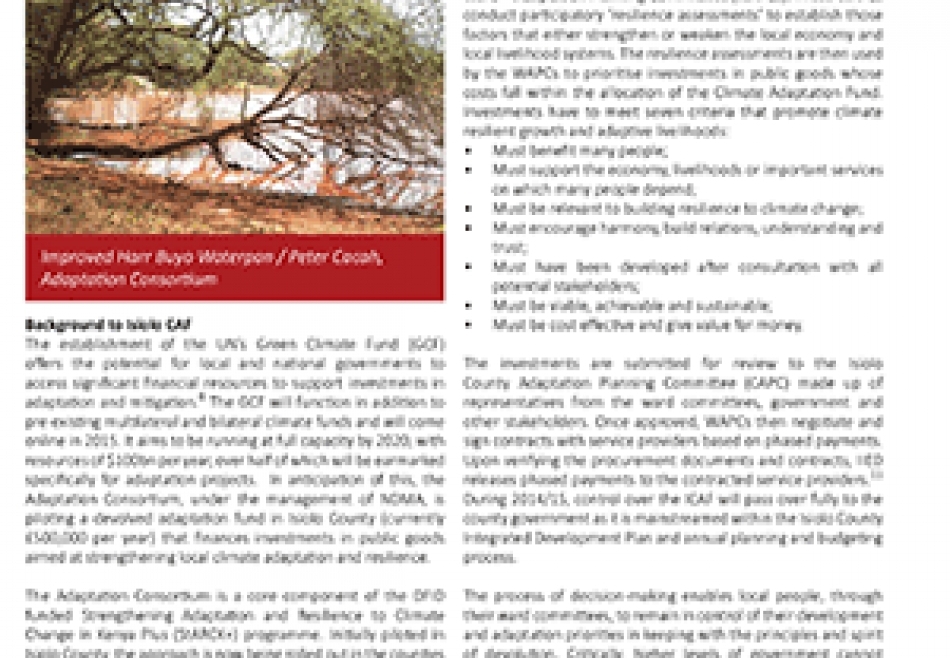Resilience in the drylands of the Horn of Africa, Edition 5
The Adaptation Consortium under the leadership of the National Drought Management Authority (NDMA), Kenya, is implementing an innovative project to help county governments to access climate finance and mainstream climate change into planning for adaptation and climate resilient development. The Isiolo County Adaptation Fund (ICAF) was established in 2012 and is now in its 2nd year of operation. This article looks at how it works, the achievements of the first year and the broader lessons learnt.
Background to Isiolo CAF
The establishment of the UN’s Green Climate Fund (GCF) offers the potential for local and national governments to access significant financial resources to support investments in adaptation and mitigation. 8 The GCF will function in addition to pre-existing multilateral and bilateral climate funds and will come online in 2015. It aims to be running at full capacity by 2020, with resources of $100bn per year, over half of which will be earmarked specifically for adaptation projects. In anticipation of this, the Adaptation Consortium, under the management of NDMA, is piloting a devolved adaptation fund in Isiolo County (currently £500,000 per year) that finances investments in public goods aimed at strengthening local climate adaptation and resilience.
The Adaptation Consortium is a core component of the DFID funded Strengthening Adaptation and Resilience to Climate Change in Kenya Plus (StARCK+) programme. Initially piloted in Isiolo County, the approach is now being rolled out in the counties of Kitui, Makueni, Wajir and Garissa. Consortium members include: the National Drought Management Authority, Kenya Meteorological Services (KMS), the UK Met office, Christian Aid, the Resource Advocacy Programme and the International Institute for Environment and Development (IIED).



